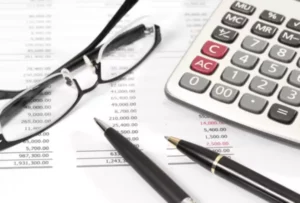Content

Accumulated depreciation is the total amount of depreciation taken to date. For example, a piece of equipment purchased for $500 with accumulated depreciation https://www.bookstime.com/ of $200 would have a book value of $300. There are various methods of depreciating an assets, such as the declining balance and straight-line method.
- A contra account is an entry on the general ledger with a balance contrary to the normal balance for that categorization (i.e. asset, liability, or equity).
- Contra accounts are used to reduce the value of the original account directly to keep financial accounting records clean.
- Contra accounts are important because they allow a company to follow the matching principle by recording an expense initially in the contra asset account.
- Instead, the company will change the amount of accumulated depreciation recognized each year.
- The philosophy behind accelerated depreciation is assets that are newer (i.e. a new company vehicle) are often used more than older assets because they are in better condition and more efficient.
- A Contra asset account is an asset account having a credit balance that is related to one of the assets with a debit balance.
Depreciation expense is calculated by estimating the useful life of an asset and then spreading the asset’s cost over that period. The useful life is the length of time a company expects an asset to remain in use. He makes most of his money feeding lunch to hungry office workers who like to eat outside. Once Freddie accumulated some assets for the business, his office manager Rita told him they would need to set up depreciation for those assets.
Assets, Liabilities, Equity: Comparison
The four main types of contra accounts are contra asset, contra liability, contra equity, and contra revenue. Accumulated depreciation and allowance for doubtful accounts are the main contra asset accounts. These contra asset accounts are recorded with a credit balance that decreases contra asset account the balance of an asset. Accumulated depreciation as a major contra account reduces the balance of the fixed and capital assets. Therefore, when accounting for assets, the difference between the asset’s account balance and the contra account balance will be the book value.

Mary Girsch-Bock is the expert on accounting software and payroll software for The Ascent. If you keep a lot of inventory in stock, chances are that some of the inventory will become obsolete. This frequently happens to manufacturing companies that sell products with an expiration date since any inventory remaining in stock past the expiration date quickly becomes obsolete. That is, the company will depreciate $10,000 for the next 10 years until the book value of the asset is $10,000. Provision for a discount from creditors and discount on bills receivable are other widely used examples. Harold Averkamp (CPA, MBA) has worked as a university accounting instructor, accountant, and consultant for more than 25 years.
Accounting Dictionary
The depreciation expense is expressed as the amount that has been depreciated for a single period while the accumulated depreciation is the total amount of depreciation of the asset. This simply means that accumulated depreciation is the total amount of capital or fixed asset’s cost that has been allocated as depreciation expense from the time that the asset has been used. There are three contra asset accounts that commonly appear in an organization’s chart of accounts. It is paired with the trade accounts receivable account, and contains a reserve for receivables that are unlikely to be paid by customers. By combining the balances in these two accounts, one can determine the net amount of receivables that the reporting entity expects to receive.
- For example, if Poochie’s just reported the net amount of its fixed assets ($49,000 as of December 31, 2019), the users would not know the asset’s cost or the amount of depreciation attributed to each class of asset.
- Accounts receivable (A/R) has a debit balance, but the allowance for doubtful accounts carries a credit
balance. - There are two major methods of determining what should be booked into a contra account.
- If you’re using accounting software, you’ll be able to create contra accounts when setting up your chart of accounts.
- The use of Allowance for Doubtful Accounts allows us to see in Accounts Receivable the total amount that the company has a right to collect from its credit customers.
Contra accounts are used to reduce the value of the original account directly to keep financial accounting records clean. In bookkeeping, a contra asset account is an asset account in which the natural balance of the account will either be a zero or a credit (negative) balance. The account offsets the balance in the respective asset account that it is paired with on the balance sheet.
An example of recording a contra asset
Depreciation is the process of spreading the cost of assets over the time they will be in service by the business. It is an application of the matching principle, which is a central feature of GAAP accounting. The building is expected to be useful for 20 years with a value of $10,000 at the end of the 20th year. Divided over 20 years, the company would recognized $20,000 of accumulated depreciation every year.
